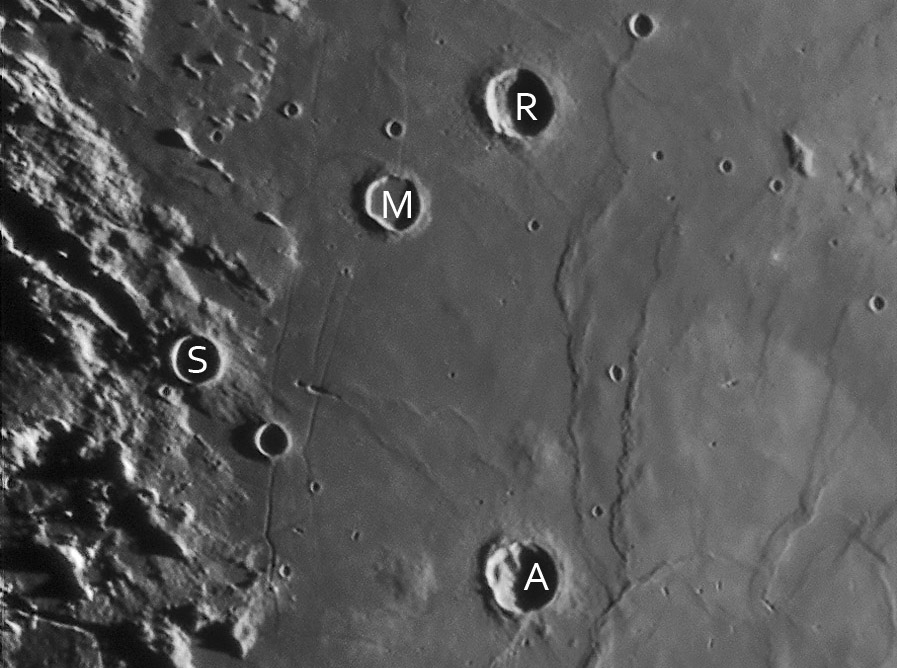January 15, 2023
Unlikely?
Originally published February 21, 2013

image by Fréderic Géa and Philippe Tosi, France
Frédéric built a 1 meter aperture f/3 telescope that he and Phillipe are using to obtain outstanding lunar images. This excerpt from a larger image concentrates on the northwest corner of Mare Tranquillitatis with its plethora of rilles and domes. I am fascinated by the interaction between the mare rilles and the slightly elevated basin ejecta associated with the linear ridges in the upper left corner. Here is the sequence of events in this general area. The Tranquillitatis basin formed, followed after some unknown interval by the Imbrium Basin. Imbrium ejecta, as seen everywhere along the western margin overlapped the rim of the Tranquillitatis basin. Lavas erupted on to the floor of Tranquillitatis, at some point becoming so massive that they caused the basin floor to subside, creating stresses along the edges which led to the formation of the concentric rilles. It is clear that Tranquillity lavas embay - that means fills in around - ejecta ridges around the crater Sosigenes (S), just as expected from the sequence of events. But it also appears that the Imbrium ejecta between Sosigenes and Maclear (M) covers the rilles in the mare. There is lots of evience that Imbrium formed before the eruption of Tranquillity lavas (and formation of their concentric rilles) so the previous sentence can not be true. My interpretation must be wrong. The LRO QuickMap view has too high an illumination to be be very helpful but it does suggest a solution. The area just west of Maclear may be a patch of lava younger than the lavas the rilles formed in. The younger lavas may have covered the older ones. Mystery averted.
Chuck Wood
Technical Details
Feb 16, 2013. Newton 1M F/3 (self made) + skynyx 2.1 M + 742 IR filter+barlow 2X. 200 images stacked by registax 6 and enhanced by Photomatix pro 4.2 pro developed by HDRsoft.
Related Links
Rükl plate 35
21st Century Atlas chart 12.
Fréderic's astronomy bed and breakfast
Yesterday's LPOD: Micro-Treasures
Tomorrow's LPOD: Another Passing of the Apollo Era
COMMENTS?
Register, Log in, and join in the comments.



